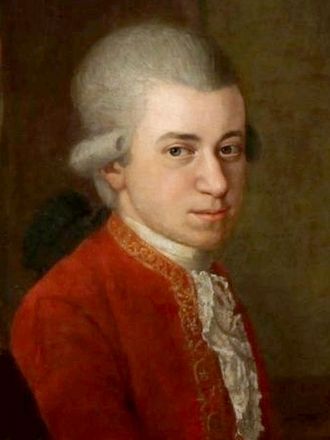Ignaz Fränzl
(3 June 1736 -- 6 September 1811 (buried))
German violinist, composer and representative of the second generation
of the so-called Mannheim School. Mozart who heard him at a concert in November 1777 wrote of him in a letter to his father: He may not be a sorcerer, but he is a very solid violinist indeed.[3] Fränzl carried the Mannheim violin technique, established by Johann Stamitz, one step further to real virtuosity. Mozart, quite a good violinist himself and thoroughly acquainted with the instrument, praised Fränzl's double trill and said he had never heard a better one.
Symphony No.5 in C-major
Mov.I: Allegro Vivace 00:00
Mov.II: Andante 05:29
Mov.III: Presto 10:32
Orchestra: Concerto Köln
Conductor: Werner Ehrhardt
Biography
Ignaz Fränzl was born and died in Mannheim, and entered the Mannheim court orchestra in 1747 as a violinist, probably as a scholar (i.e. apprentice) similar to Christian Cannabich, another composer-violinist of the Mannheim school. In the personnel list of 1756 he is documented as a first violinist together with Cannabich and Carlo Giuseppe Toeschi. As was the case with many of his colleagues of the Mannheim court orchestra, Fränzl also travelled to Paris on a few occasions where he performed at the Concert Spirituel.[4] In 1774 he was promoted to concertmaster, a position which he kept until most of the court orchestra was transferred to Munich in 1778.
He was also active as a violin teacher. His most notable pupils were his own son, Ferdinand Fränzl, Pierre Noël Gervais, Paul Anton Winnberger, and Friedrich Wilhelm Pixis (II), brother of the more famous piano virtuoso Johann Peter Pixis.
Contrary to the majority of the other members of the court orchestra Fränzl did not relocate to Munich but chose to stay in Mannheim where he became music director of the court theatre, a position which he kept until 1804.
Fränzl as seen by Mozart and Dittersdof
Fränzl and Mozart
Mozart heard Fränzl play a violin concerto on 22 November 1777. The concert took probably place in the Rittersaal (Knight’s hall) of the Mannheim Palace. Mozart wrote home to his father on the same evening:
- "To-day at six o'clock the gala concert took place. I had the pleasure of hearing Herr Fränzl (who married a sister of Madame Cannabich's) play a concerto on the violin;[5] he pleased me very much. You know that I am no lover of mere difficulties. He plays difficult music, but it does not appear to be so; indeed, it seems as if one could easily do the same, and this is the real thing. He has a very fine round tone, not a note is missing, and everything is distinct and well accentuated. He has also a beautiful staccato in bowing, both up and down, and I never heard such a double trill as his. In short, though in my opinion no sorcerer, he is a very solid violin
- player indeed."[6]
The Concerto for Violin and Piano, K. 315f, was written for him and Mozart to play, but was never completed due to Mozart's departure from Mannheim in December 1778.[7]
Fränzl and Dittersdorf
Fellow violinist and composer Karl Ditters von Dittersdorf, an almost exact contemporary of Fränzl, heard him play in Vienna 1787 and judged him to be one of the best violinists of his generation:
- on this occasion I came across seven foreign violinists, who were all there on speculation, and came together quite unexpectedly. Foremost among them were Jarnowich, Frenzel père (sic), and a certain S., who belonged to the German Empire. The superiority of S. consisted in double-stopping and arpeggios, which he paraded ad nauseam. Every moment he was making some clumsy transition, or running counter to the rules of true composition, so that every real connoisseur had his teeth set on edge."[8]
'♣ 음악 감상실 ♣ > * 관련이야기' 카테고리의 다른 글
| 루돌프 대공[Archduke Rudolf] 작품 모음- Clarinet Trio in B-flat major (0) | 2021.05.15 |
|---|---|
| 베토벤 -교향곡 목록 (0) | 2016.03.09 |
| Piano sonata 목록 (0) | 2016.02.29 |
| Violin sonata 목록 (0) | 2016.02.27 |
| 베토벤 소나타의 분류 (0) | 2016.02.27 |


